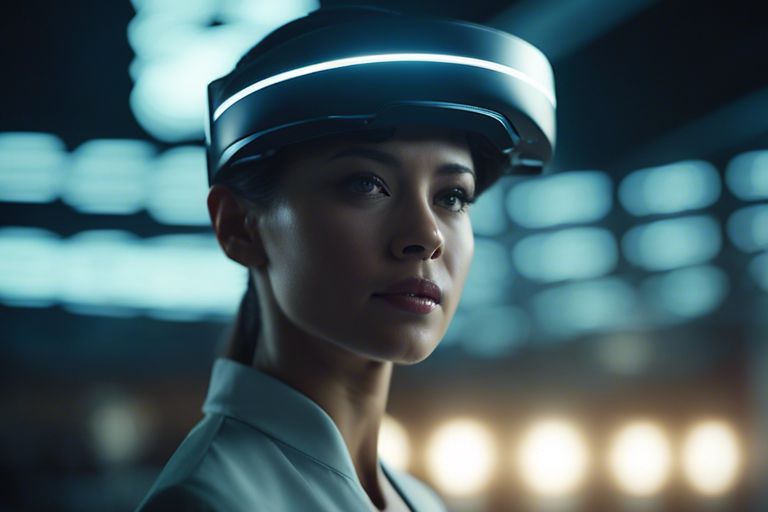Enhancing The Visual World – How Computer Vision Is Revolutionizing Emerging Technologies
Delve into the groundbreaking realm of computer vision and witness how this transformative technology is reshaping the landscape of emerging technologies. From autonomous vehicles to facial recognition systems, computer vision is revolutionizing industries and enhancing our daily lives in unprecedented ways. Discover the innovative applications, the potential risks and benefits, and how this cutting-edge technology is set to transform the future of our visual world.
Core Technologies Behind Computer Vision
Image Recognition and Processing
Before delving into the intricacies of computer vision, it is essential to understand the fundamental processes that drive this revolutionary technology. Image processing is at the core of computer vision, involving the manipulation and analysis of visual data captured by cameras or sensors. This step includes tasks such as image enhancement, segmentation, feature extraction, and pattern recognition, enabling computers to make sense of visual information.
Image recognition, a subset of image processing, focuses on identifying objects, scenes, or patterns within images. This involves training algorithms to recognize specific features or objects by analyzing vast amounts of labeled data. By leveraging sophisticated algorithms and neural networks, computers can classify and detect objects in real-time, laying the foundation for various applications in industries like healthcare, automotive, and security.
Machine Learning and Artificial Intelligence
Any discussion on computer vision would be incomplete without mentioning the pivotal role of machine learning and artificial intelligence (AI) in driving its advancements. These technologies empower computer systems to learn from experience, adapt to new information, and perform tasks that typically require human intelligence. In the context of computer vision, machine learning algorithms enable computers to recognize patterns, make decisions, and improve their accuracy over time.
It is through the integration of machine learning algorithms, particularly deep learning models like Convolutional Neural Networks (CNNs), that computer vision systems have achieved remarkable feats in image recognition, object detection, and even image generation. These AI-powered algorithms can analyze complex visual data at incredible speeds, surpassing human capabilities in certain tasks and opening up a realm of possibilities across various industries.
Applications in Emerging Technologies
While computer vision technology has made significant strides in recent years, its applications in emerging technologies have particularly stood out. From autonomous vehicles and drone navigation to augmented reality experiences, computer vision is revolutionizing the way we interact with the world around us.
Autonomous vehicles and drone navigation
Vehicles equipped with computer vision technology are capable of understanding their surroundings, making real-time decisions, and navigating with precision. This advanced technology enables autonomous vehicles to detect and avoid obstacles, recognize traffic signs, and even interpret hand gestures from pedestrians. In the case of drone navigation, computer vision allows drones to maintain stability, avoid collisions, and follow specified routes accurately.
Autonomous vehicles and drones are transforming industries such as transportation, logistics, and surveillance. With the ability to operate efficiently and safely without human intervention, these technologies are paving the way for a future where autonomous vehicles can navigate crowded city streets and drones can deliver packages to remote locations.
Augmented reality (AR) and virtual reality (VR) experiences
Emerging technologies such as augmented reality (AR) and virtual reality (VR) are incorporating computer vision to enhance user experiences. By overlaying digital information onto the physical world, AR applications can provide real-time data, immersive gaming experiences, and interactive training simulations. VR environments, on the other hand, rely on computer vision to track users’ movements and gestures, creating a sense of presence in virtual worlds.
Drone piloting is another area where computer vision is making significant advancements. Drones equipped with AR technology can superimpose flight paths, points of interest, and obstacle warnings onto the pilot’s field of view, enhancing situational awareness and safety during operations.
Challenges and Ethical Considerations
After exploring the incredible potential of computer vision technology in enhancing the visual world, it is crucial to address the challenges and ethical considerations that arise with its widespread use. As with any emerging technology, there are important factors to consider to ensure the responsible and ethical deployment of computer vision.
Data privacy and security issues
Considerations surrounding data privacy and security are paramount when discussing the implementation of computer vision systems. The vast amounts of data collected and analyzed through these systems raise concerns about unauthorized access, misuse, and potential breaches. With personal information and sensitive data often being captured, stored, and processed, it is imperative to establish robust protocols to safeguard privacy and prevent security vulnerabilities.
Mitigating bias and ensuring ethical usage
Security in computer vision technology extends beyond data protection to addressing issues of bias and ethical usage. Biases in algorithms can lead to discriminatory outcomes, perpetuate stereotypes, and undermine the fairness and trustworthiness of the technology. It is essential to implement strategies for identifying, mitigating, and transparently addressing biases to ensure that computer vision systems are used ethically and without perpetuating societal inequalities.
With the potential to influence decisions in areas such as hiring, law enforcement, and healthcare, ethical considerations must be at the forefront of developing and deploying computer vision technology. Organizations and developers must prioritize ethical standards, diversity, and inclusivity to build trustworthy systems that benefit society as a whole.

Future of Computer Vision
Trends and innovations on the horizon
The future of computer vision promises to be filled with exciting trends and innovations that will further revolutionize the way we interact with technology. Advancements in deep learning algorithms, neural networks, and image processing techniques will continue to enhance the accuracy and speed of computer vision systems. Emerging technologies like augmented reality and autonomous vehicles will heavily rely on computer vision to function seamlessly, driving the need for more sophisticated solutions.
Integrating with other technological advancements
On the horizon, we can expect to see computer vision seamlessly integrated with other technological advancements such as Internet of Things (IoT), blockchain, and 5G networks. This integration will enable computer vision systems to operate on a larger scale, connecting with a myriad of devices and platforms to provide real-time insights and analysis.
With the ability to process and analyze vast amounts of visual data in near real-time, the integration of computer vision with other technological advancements will unlock countless possibilities across various industries, from smart cities and healthcare to manufacturing and retail.
Conclusion
Conclusively, computer vision continues to advance and revolutionize emerging technologies by enhancing the visual world in ways we once thought impossible. From autonomous vehicles to medical imaging, the applications of computer vision are vast and continually expanding. As technology continues to evolve, the potential for computer vision to revolutionize various industries is limitless. It is crucial for us to understand and keep up with the latest developments in computer vision to fully harness its benefits and possibilities for the future.
FAQ
Q: What is computer vision?
A: Computer vision is a field of artificial intelligence that enables machines to interpret and understand visual information from the real world.
Q: How is computer vision revolutionizing emerging technologies?
A: Computer vision is revolutionizing emerging technologies by enabling machines to see, interpret, and make decisions based on visual data, significantly advancing automation, surveillance, healthcare, and more.
Q: What are some practical applications of computer vision?
A: Practical applications of computer vision include facial recognition, object detection, autonomous vehicles, medical image analysis, quality control in manufacturing, and augmented reality.
Q: How does computer vision work?
A: Computer vision systems use algorithms to process and analyze visual data from images or videos, extract features, and make sense of the information to enable machines to “see” and understand the world around them.
Q: What are the challenges in computer vision technology?
A: Challenges in computer vision technology include handling large amounts of visual data, ensuring accuracy and reliability in image recognition, addressing privacy concerns in surveillance applications, and developing robust systems that can perform well in diverse real-world conditions.
![]()













